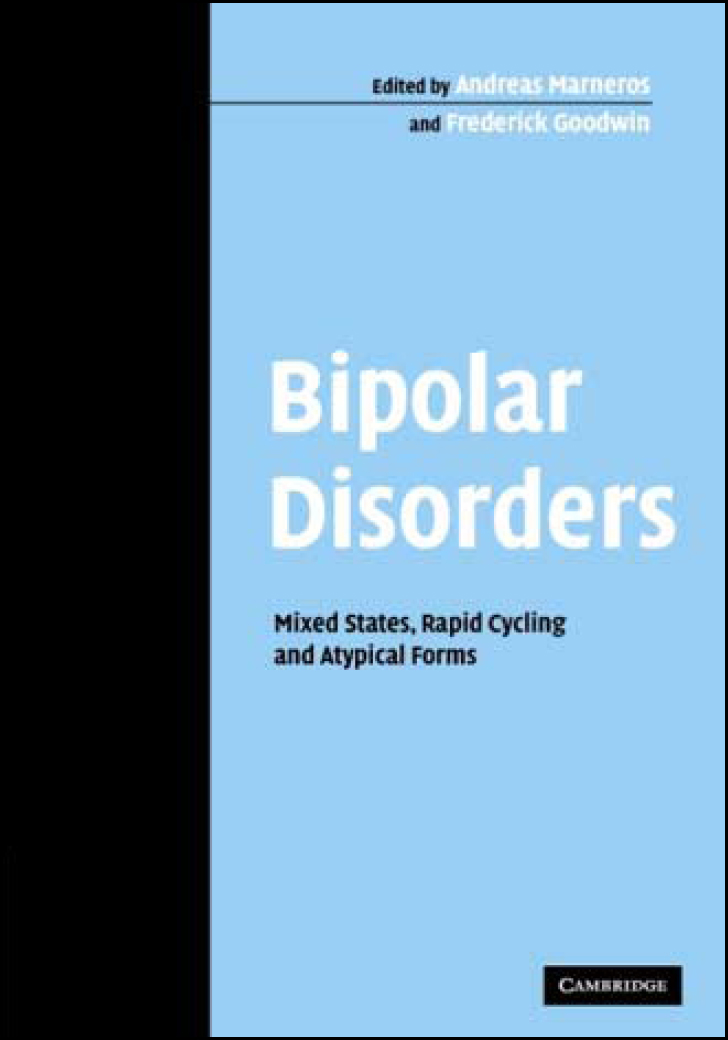
Marneros & Goodwin provide an excellent insight into the current knowledge, as well as gaps in knowledge, about the various clinical manifestations and treatment of bipolar disorder, including mixed states, rapid cycling and the atypical forms.
The book starts with a description of the discovery of the different forms of bipolar disorder, from the first descriptions by Hippocrates through to Kraepelin. These resulted in more specific definitions of the subtypes which are put into perspective using the latest DSM and ICD classifications as well as various new research data. An overview of the pharmacotherapeutic options is provided, including the newer agent lamotrigine, for the treatment of rapid cycling and agitated depression and the use of atypical antipsychotics in the treatment of mixed and pure manic states with and without psychotic symptoms. Special attention is given to pharmacological treatments in which lithium has been shown to be less effective.
The available research on family, twin, adoption, association and linkage studies is critically appraised. Methodological, ethical and multiple-gene issues important for designing future studies are discussed.
Differences in neurotransmission and hormone release in bipolar mixed states are addressed and twelve different treatment options presented. There is also discussion of investigational strategies for the treatment of rapid cycling, mixed episodes and atypical bipolar mood disorder, focusing on study design and offering suggestions for study methodology for this challenging condition.
The book is an easy and comprehensive read. Providing insight into present knowledge of the diverse manifestations along the full spectrum of bipolar disorder, it gives an overview of gaps in knowledge remaining to be studied. The book's strength is that it not only determines issues that are weakly presented in the research arena but it also looks at methodological and study design issues that can help to improve future research. The weakness is that when addressing effectiveness of specific pharmacotherapeutic possibilities it does not always fully address the issue of adverse events. This would include those capable of resulting in patient- or physician-initiated discontinuation of treatment, problems that could arise from using specific drug combinations and the genetic differences that may be important in this field. This is an interesting book worthwhile for both clinicians and researchers in the field of bipolar disorders.



eLetters
No eLetters have been published for this article.